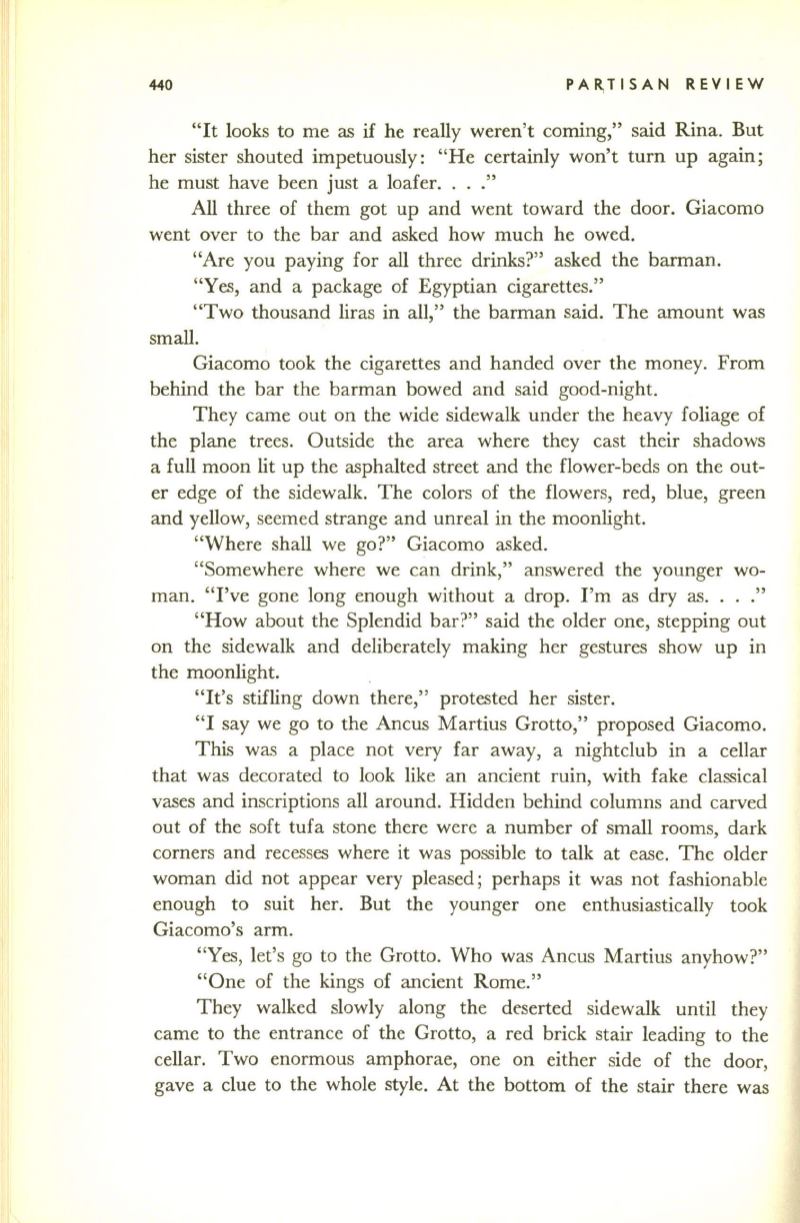
440
PAR,TISAN REVIEW
"It looks to me as if he really weren't coming," said Rina. But
her sister shouted impetuously: "He certainly won't turn up again;
he must have been just a loafer. ..."
All three of them got up and went toward the door. Giacomo
went over to the bar and asked how much he owed.
"Are you paying for all three drinks?" asked the barman.
"Yes, and a package of Egyptian cigarettes."
"Two thousand liras in all," the barman said. The amount was
small.
Giacomo took the cigarettes and handed over the money. From
behind the bar the barman bowed and said good-night.
They came out on the wide sidewalk under the heavy foliage of
the plane trees. Outside the area where they cast their shadows
a full moon lit up the asphalted street and the flower-beds on the out–
er edge of the sidewalk. The colors of the flowers, red, blue, green
and yellow, seemed strange and unreal in the moonlight.
"Where shall we go?" Giacomo asked.
"Somewhere where we can drink," answered the younger wo–
man. "I've gone long enough without a drop. I'm as dry as. . . ."
"How about the Splendid bar?" said the older one, stepping out
on the sidewalk and deliberately making her gestures show up in
the moonlight.
"It's stifling down there," protested her sister.
"I say we go to the Ancus Martius Grotto," proposed Giacomo.
This was a place not very far away, a nightclub in a cellar
that was decorated to look like an ancient ruin, with fake classical
vases and inscriptions all around. Hidden behind columns and carved
out of the soft tufa stone there were a number of small rooms, dark
corners and recesses where it was possible to talk at ease. The older
woman did not appear very pleased; perhaps it was not fashionable
enough to suit her. But the younger one enthusiastically took
Giacomo's arm.
"Yes, let's go to the Grotto. Who was Ancus Martius anyhow?"
"One of the kings of ancient Rome."
They walked slowly along the deserted sidewalk until they
came to the entrance of the Grotto, a red brick stair leading to the
cellar. Two enormous amphorae, one on either side of the door,
gave a clue to the whole style. At the bottom of the stair there was


